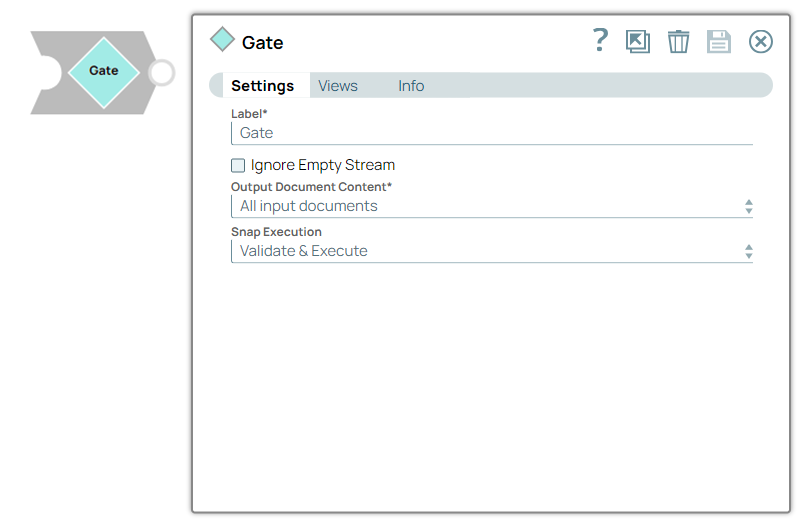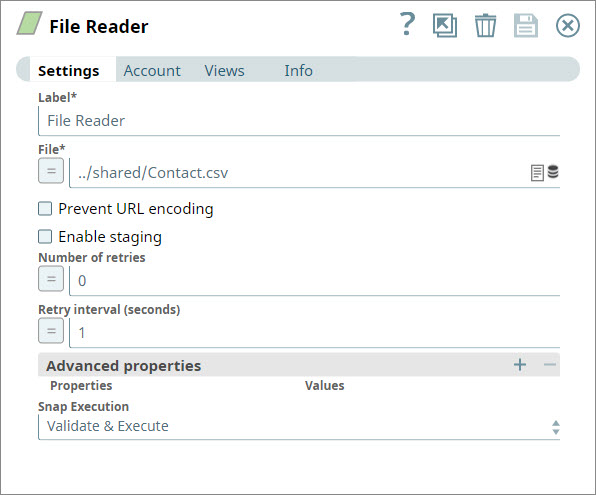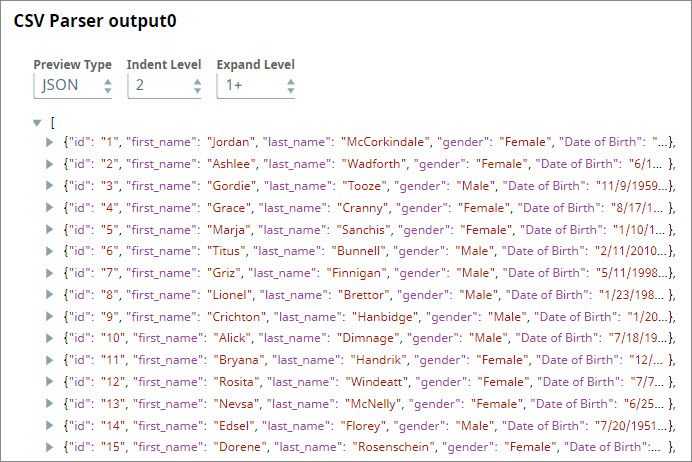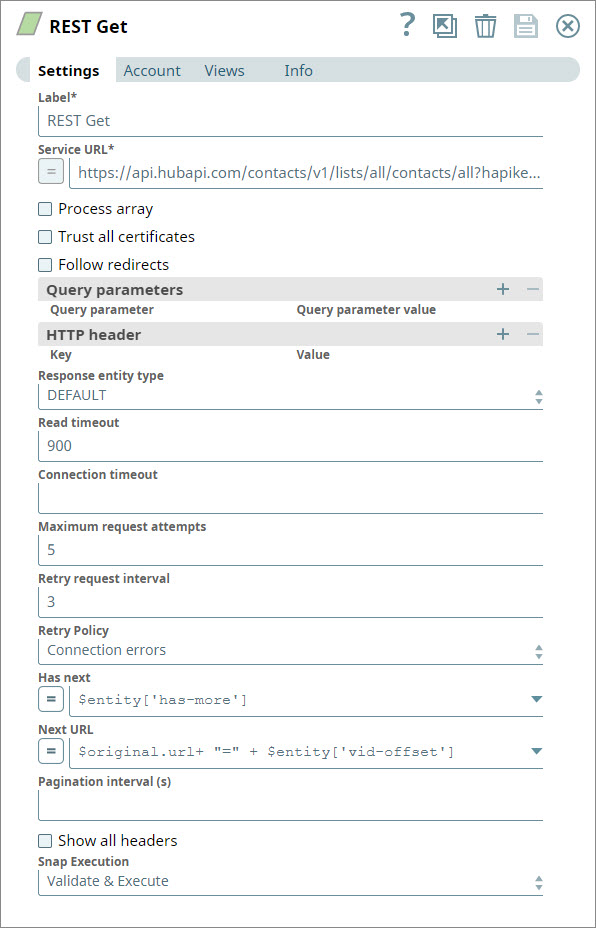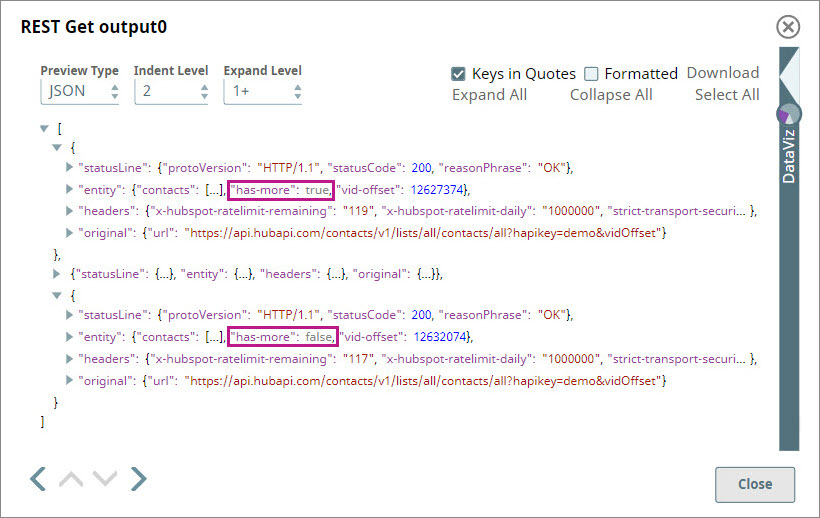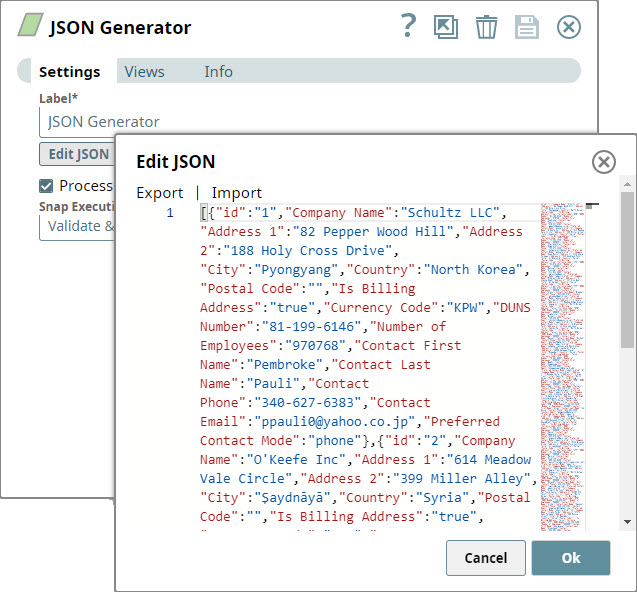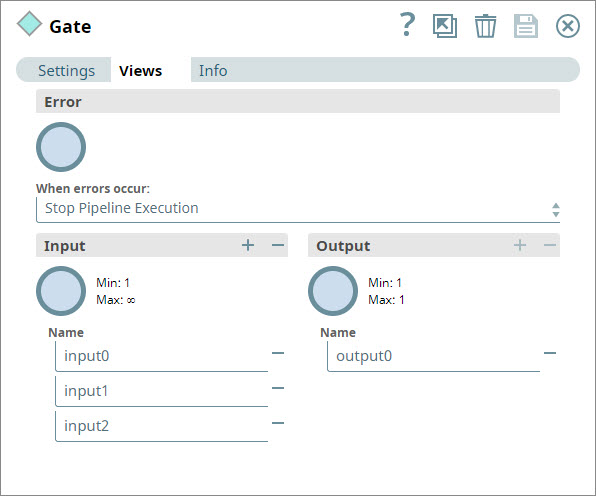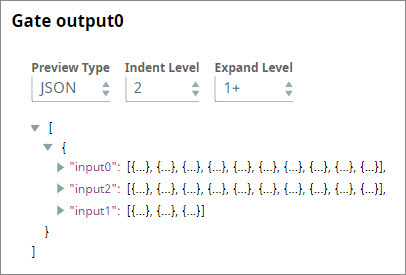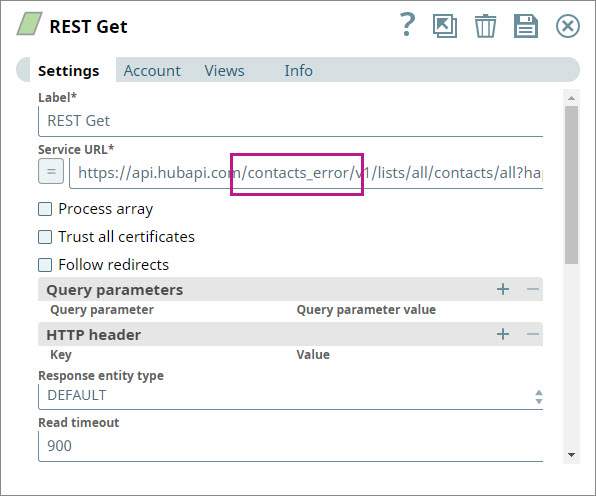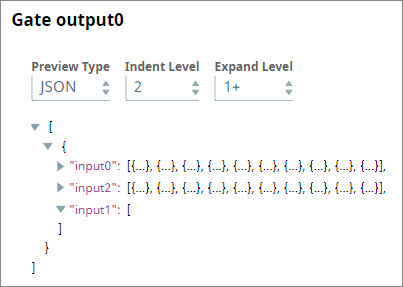In this Article
| Table of Contents | ||||
|---|---|---|---|---|
|
Overview
Use this Snap to consolidate multiple input streams into a single output document, where each input stream is displayed as a a label containing the records that were received by that input view.
It is also important to note that this Snap does not complete executing until the execution of all upstream Snaps is done.
650
Prerequisites
This Snap collects multiple input documents into a single output document; hence there are system memory limitations, and it should not be used for massive data propagation. If large amounts of data are required, offload your data before Snap execution. You can also write your data to a file or database; then, after Snap execution completes, you can use a Reader Snap (File Reader, S3 Reader, and so on) to read from the offloaded data source.
...
- Configure the File Reader Snap to the pipeline and configure it to read a CSV file containing contact information:
- Configure a CSV Parser Snap to read the input binary data as CSV. Once this Snap executes, you can view the contents of the file that the File Reader Snap read:
You create a separate branch of the Pipeline by adding an unconnected REST Get Snap. You configure the Snap to retrieve contact data from HubSpot, which typically offers data in pages of 20 records each. You use the Has next and Next URL fields to specify how the Snap can retrieve additional pages of data. For step-by-step information on how to use the REST Get Snap to perform this task, see Retrieving Contact Information from HubSpot.
The REST Get Snap retrieves the data in pages of 20 as requested until the value of thehas-morevariable changes to false:Info Note that until the REST Snap completes executing, the Gate Snap doesn't start reading data from any of its input views.
- You create another branch of the Pipeline by adding a JSON Generator Snap that provides customer information:
- You add a Gate Snap and configure it to have three input views:
Make no further changes to the Gate Snap and connect its three inputs to each branch you created in the steps above. - Save and run the Pipeline. The Gate Snap now collects the completed inputs from all upstream branches and offers them all as separate arrays in a single output document:
- To check how the Gate Snap behaves when one of the Snaps does not offer any output, you introduce an error into the REST Get Snap:
- Save and re-execute the Pipeline. The Gate Snap now offers an output that contains all the data received from the File Reader and JSON Generator branches, but in the output associated with the REST Get Snap, it outputs a null record:
Downloads
| Attachments | ||
|---|---|---|
|
...
Related Content
...
...
